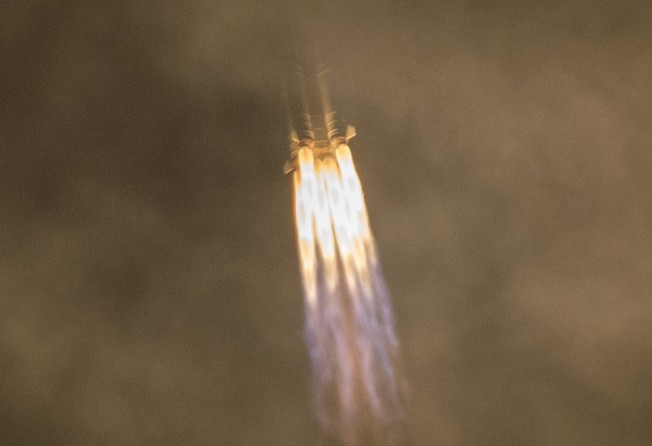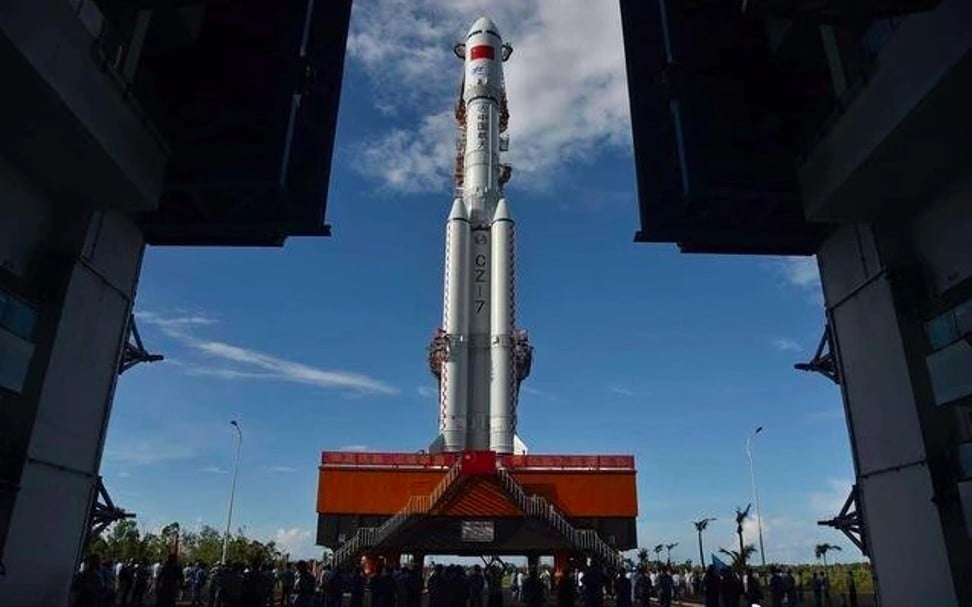China’s new Long March-7A rocket fails first launch
- Rocket encountered an ‘abnormality’ during its ascent Monday night, state media reported
- Failure could put a dent in China’s ambitious space plans for the year and affect planned launches of other rockets in the Long March family

A new type of Chinese rocket failed in its first launch on Monday night, raising questions over the country’s ambitious space missions planned for the rest of the year.
The CZ-7A rocket, or Long March-7A, encountered an “abnormality” after taking off at 9.34pm from the Wenchang Satellite Launch Site in Hainan province, state news agency Xinhua reported.
The cause of the problem is unknown. Expert investigation and analysis would follow, Xinhua said, without disclosing more details.
An unverified witness video published on China’s Twitter-like Weibo platform showed the rocket suddenly flaring about three minutes after launch, suggesting an explosion during, or soon after, second-stage separation.
CZ-7A is a three-stage, medium-lift, liquid-fuel rocket able to send a payload of 7 tonnes into geostationary orbit. It is expected to play an important role in China’s high orbit missions.
Sixty metres (197 feet) long and weighing 573 tonnes (632 short tons), the rocket is designed mainly for geostationary satellite delivery and can be launched from both the Wenchang site and the Xichang Satellite Launch Centre in Sichuan province, its developer, the China Academy of Launch Vehicle Technology, said.
Since the CZ-7A uses many of the same technologies as other rockets in the CZ family, the failure might have some impact on launches already planned.
The two-stage CZ-7, for example, which will serve as the main rocket to take supplies and crew to China’s permanent space station, uses YF-100 and YF-115 engines for its first and second stages, respectively, just like the CZ-7A.
The YF-100 kerosene/oxygen engine is also used in China’s CZ-5 rocket which, able to deliver a payload of up to 33 tonnes (36 short tons), is expected to be relied upon for some of the country’s most important space missions. The CZ-5’s second-stage YF-75D engine is a modification of the YF-75 hydrogen/oxygen engine used in the CZ-7A’s third stage.

Development of the CZ-5 was already behind schedule after the failure of a July 2017 mission followed by a string of cancellations or delays. It finally delivered a satellite into orbit in December.
The China National Space Administration said 2020 would be a milestone in an ambitious long-term plan with several important missions in the pipeline.
Planned launches include the maiden flight of a new spaceship in April, a probe to Mars in July, the Chang’e-5 lunar probe later in the year – all sent with CZ-5 rockets or variants – and the final BeiDou satellite used for its orbiting network to rival GPS.
The Mars probe – China’s first – is perhaps the biggest concern. Mars moves closest to the Earth every 26 months, which provides optimal conditions for missions to the red planet. If July’s window is missed, the mission timetable would be significantly delayed.
Purchase the China AI Report 2020 brought to you by SCMP Research and enjoy a 20% discount (original price US$400). This 60-page all new intelligence report gives you first-hand insights and analysis into the latest industry developments and intelligence about China AI. Get exclusive access to our webinars for continuous learning, and interact with China AI executives in live Q&A. Offer valid until 31 March 2020.